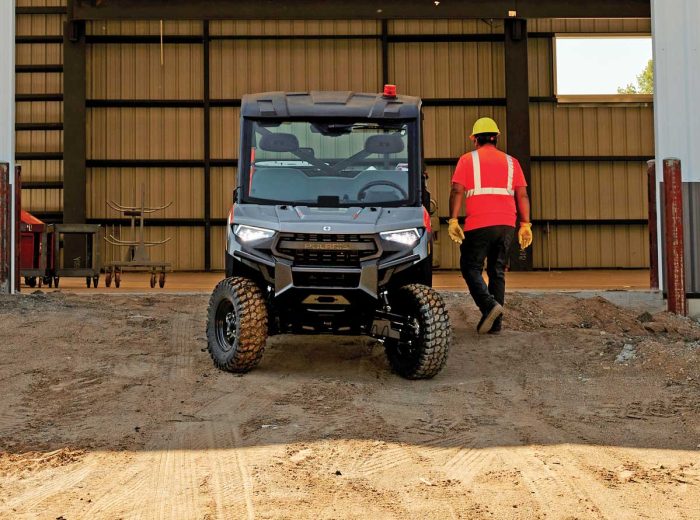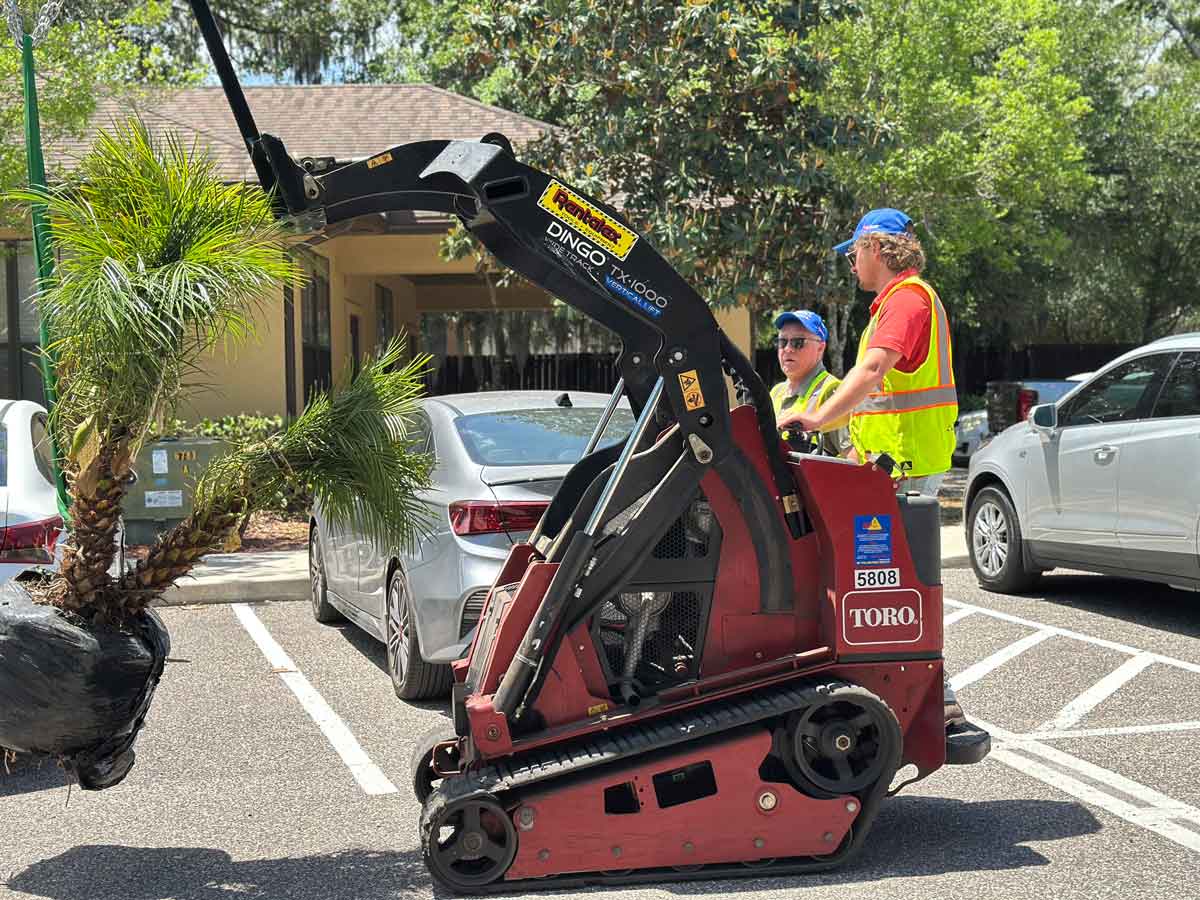5 Tips for Staying on Top of Maintenance for Compact Equipment

Editor’s Note: This article was first published on Equipment Trader‘s website. You can view the original article right over here.
Whether your business runs one or one hundred pieces of compact equipment, establishing and adhering to a maintenance schedule will help you keep everything in a state of good repair, and prevent sudden failures that lead to emergency fixes and costly downtime. It’s easy to neglect routine maintenance on equipment that is in constant operation or, conversely, put away in storage. Equipment Trader has a few tips for you to successfully implement — and keep up with — preventative maintenance for your heavy equipment.
1. Create a Maintenance Calendar
It’s a no-brainer: having a maintenance schedule in place is crucial to getting preventative maintenance done. The important part is translating that schedule — such as “once every two weeks” — to individual calendar events, especially for less frequent and more extensive tasks. Knowing when to expect certain maintenance tasks will allow you to schedule an order for the required parts and materials, so you have what you need when you need it. Creating a calendar event for a major maintenance task also gives you the flexibility of scheduling it for a convenient timeslot, without the worry of it being forgotten because it’s out of cycle.
Once you’ve laid out the maintenance calendar for a period — such as a week, month or quarter — communicate it to your team, whether that’s a printed calendar posted on a wall or notifications from a calendar app, or both. You can also assign specific team members to stay on top of the maintenance schedule or individual tasks, which can prevent confusion about who is responsible for checking the schedule and making sure the maintenance task is done.
2. Create Maintenance Checklists

Following manufacturer-recommended guidelines will not only keep your equipment running but may also be crucial to getting repairs done under warranty. It can be easy to forget a step or item on a busy shop floor, so you’ll want to create a step-by-step guide (this can be a photocopy of the relevant pages of the maintenance manual) and a checklist for each maintenance service — and keep these on a clipboard or in a binder in a location that your team knows about and can easily access.
A proper checklist helps keep employees on the same page where equipment care is concerned, and allows for new hires to have a clear reference of what preventative maintenance tasks need to be completed on certain equipment. Make sure the tasks are arranged in the order in which they should be completed.
The maintenance checklist doubles as documentation of work completed, so should include the date, the name of the employee performing the maintenance tasks, and have an area for notes (for example, why a task could not be completed or if an issue requires further investigation). If you have more than one unit of the same model of equipment, you’ll want to make sure they can be easily distinguished — such as a different exterior color or an identifying badge — and have that identifier noted on the checklist so that no unit falls through the cracks.
Below are common tasks that you might find on a maintenance checklist:
- Check batteries
- Inspect bearings and belts
- Test brakes
- Check coolant and other fluid levels and quality
- Test electrical components
- Change filters
- Check fuel quality
- Inspect idlers, sprockets and other rotating components
- Replenish oil, grease and other lubricants
- Test steering systems
- Test safety devices
- Inspect teeth, tips, blades, edges, wear plates and other ground-engaging tools
- Check wheels, tires/tire pressure and tracks
- Inspect windshields and glass for cracks
3. Keep Equipment Clean
Although this point may go without saying, keeping equipment clean and clear of debris is essential in preventative maintenance. Clean equipment is not only easier to inspect, but surface dirt and other contaminants can compromise components like the engine or contaminate fluids. After cleaning, fully dry equipment to avoid metal parts rusting and apply fresh grease to any parts that need it.
Check out our Machine Heads video detailing John Deere’s 334 P-Tier skid steer and 335 P-Tier track loader.
4. Keep Records of Services and Repairs
Ensure that a record, whether paper or digital, is kept of all maintenance and repair work performed on your heavy equipment. Your maintenance checklists can serve as documentation, so make sure it’s being collected and organized. Such documentation will give you a clearer picture of your equipment’s needs and operating costs throughout its lifecycle, and also let you see what equipment most often requires repairs – giving an opportunity to boost your productivity by increasing the maintenance frequency, adding items to the maintenance schedule, or outright replacing that unit.
5. Ensure Operators are Properly Trained

Although not a maintenance measure, properly trained operators will ensure that machines are being used correctly, thereby reducing the risk of damage to the equipment. Additionally, training new operators in preventative maintenance as part of their on-boarding process — even if they aren’t responsible for repair and maintenance — will ensure that they can identify and effectively communicate any issues that might arise during equipment use. Keeping a fleet running is a group effort, and proper operator training will help avoid dangerous operation and unnecessary equipment wear, and help catch issues early and have them addressed in time.
Maintaining Equipment in Storage

Equipment that is in storage still needs to be properly maintained. Whether it’s off-season or simply not required for current jobs, ensuring that stored equipment is still being routinely checked and properly maintained will prevent issues when it is put back into use. Start by creating calendar entries for each piece of equipment. Because of the longer timeframe of these events, you may want to add reminders to ensure you have the proper staffing on the days when inspection and maintenance take place.
Set yourself up for success by storing equipment properly: disconnect batteries or hook them up to a trickle charger; drain fuel tanks or add stabilizer; check seals and fluids; inflate tires to the proper pressure; chock wheels if necessary; and completely cover (including the underside) if storing outside to minimize exposure to elements (and possible animal activity). The manufacturer may have specific instructions related to storage — check if these deviate from the norm and follow them as closely as possible.
When inspecting equipment in storage, check the following:
- surface appearance — flaking paint, cracked plastic or rust
- battery charge
- tire pressure
- fluid levels and condition
- seal integrity
- hose condition (and flexibility, if applicable)
- lubrication of moving parts
- signs of animal nesting — unexpected debris, scratches, chewed wires and hoses
A Penny of Prevention Is Worth a Dollar of Downtime

Establishing a maintenance schedule and diligently following it will keep your machines in good working condition and save you in costly repairs. Make it easy for your team to adhere to the schedule with calendar reminders, and make the maintenance process itself go smoothly with a clear checklist. Preventative maintenance is essential to maximizing the service life of heavy equipment and machinery. Taking just a few extra steps each day will ensure that your equipment stays in good shape for years to come.
Anna Cecilia Tozzi is an author at Equipment Trader.




